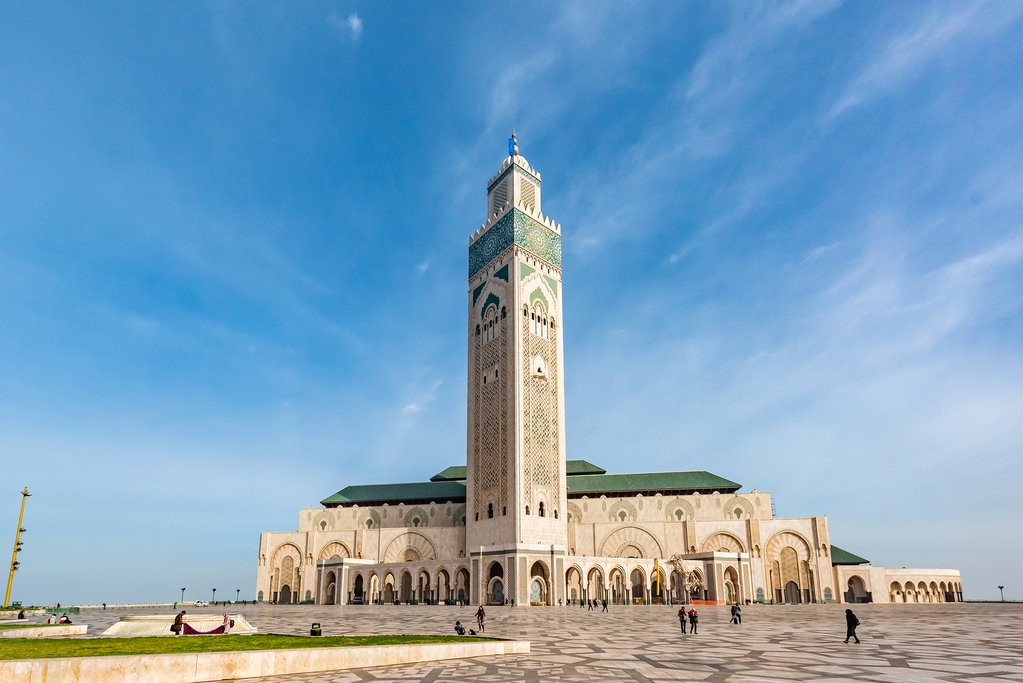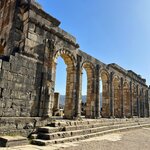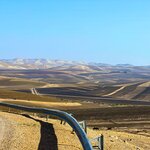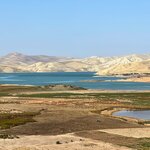Highlights
- Hike through the Rif Mountains for a glimpse of the Cascades d'Akchour
- Meet artisans and shop the beautiful, handmade local crafts in Sefrou
- Ride a camel through the Sahara Desert and watch the sunset from the dunes
- Watch the lively musicians and snake charmers at Jemma el Fna in Marrakesh
Brief Itinerary
| Day | Highlights | Overnight |
|---|---|---|
| Day 1 | Arrive in Casablanca, Transfer to Rabat | Rabat |
| Day 2 | Transfer to Chefchaouen | Chefchaouen |
| Day 3 | Hike to Waterfalls, Explore Chefchaouen | Chefchaouen |
| Day 4 | Transfer to Fes via Moulay Idriss, Volubilis & Meknes | Fes |
| Day 5 | Guided Tour of Fes, Evening Hammam Experience | Fes |
| Day 6 | Day Trip to Sefrou | Fes |
| Day 7 | Over the Middle Atlas to the Sahara, Desert Towns & Camel Ride | Merzouga |
| Day 8 | Transfer to Boumalne Dades via Rissani, Tinghir & Todra Gorge | Boumalne Dades |
| Day 9 | Transfer to Ouarzazate via El Mansour, Visit Aït Benhaddou | Ouarzazate |
| Day 10 | Transfer to Marrakesh via Tizi n'Tichka | Marrakesh |
| Day 11 | Guided Tour of Marrakesh | Marrakesh |
| Day 12 | Return to Casablanca via Coastal Cities El Jadida & Azemour | Casablanca |
| Day 13 | Depart Casablanca |
Detailed Itinerary
Day 1: Arrive in Casablanca, Transfer to Rabat

Today, you'll arrive in Casablanca and be picked up from the airport by your private driver. Your Moroccan adventure starts with a visit to the Hassan II Mosque, which has one of the tallest minarets in the world. This impressive building is representative of the best of Moroccan architecture and is also the only mosque that is open to the public with interior tours.
After lunch, you'll work your way toward Rabat to tour the Hassan Tower, a minaret of the incomplete mosque and Mausoleum of Mohamed V. All that remains in the area is the minaret and about 200 unfinished columns. Tonight, you'll stay in Rabat, and dinner will be on your own with recommendations from your driver.
Day 2: Transfer to Chefchaouen

Today, you'll make your way to Chefchaouen. This little city is a visual delight in blue; walls, doors, windows, stairways, alleyways, and archways—everything is a combination of pastel, sky-blue and richer hues. Chefchaouen is located in the heart of the Rif Mountains and is popular for travelers who want to get the feeling of old Morocco.
After check-in at your riad (a traditional Moroccan house), you can explore the town at your own pace or relax. Place Outa el Hammam, the main square, is a place to watch the world go by. Walk up the narrow, mazelike alleys away from the touristed areas, and you'll find the everyday life of the town. Shopping here is great for the budget-conscious, and you'll be able to find handcrafted wool garments, woven blankets, cedarwood furniture, and other artisanal work. Be sure to order a maqlouba (upside-down coffee) and enjoy it while watching the local women retrieve water and wash their laundry in the nearby spring.
Enjoy dinner on your own before retiring for the evening.
Day 3: Hike to Waterfalls, Explore Chefchaouen

Take note of Chefchaouen's blue buildings, which glow in the morning light. Make sure to wake up early to watch the sunrise over the mountains from the nearby Spanish Mosque. Since many shops don't open until 10 am, you can take this time to wander the town in relative quiet.
Then, you'll depart for a guided hike in the Rif Mountains. Here, you'll get the chance to explore the wilderness among the cedar trees and can hike to the Cascades d'Akchour, a stunning waterfall that will warrant plenty of photos. You'll also encounter smaller waterfalls along the way, and depending on the weather, you can take a refreshing dip. On the other side of the river, take the steep path to God's Bridge, a natural rock formation. Or, you can follow the canyon to view the bridge from below.
Once back in Chefchaouen, visit the medina and surround yourself with the beauty of the town. Take a walk to the market, where you can buy some fresh fruit, and then people watch the local passersby dressed in bright-colored traditional garb. Dinner is at your leisure, and you'll have the rest of the evening to relax before you move on to your next tour tomorrow.
Day 4: Transfer to Fes via Moulay Idriss, Volubilis & Meknes

Today, you'll say goodbye to Chefchaouen and travel south to Fes. On the way, you'll stop to visit UNESCO-listed Volubilis, Morocco's best-preserved Roman ruins. Wander the massive complex, exploring large merchant homes with visible heating systems, temples, and many well-preserved mosaics. You'll then lunch in Moulay Idriss, which from a distance, looks like a sitting camel, Morocco's first Islamic capital and a site of ongoing cultural significance, before stopping in Meknes. With a smaller medina than Fes, you can explore leisurely without worrying about aggressive shopkeepers.
Your driver will lead you through Ville Impériale, where you can see gardens, palaces, the impressive gate of Bab al-Mansour, the Mausoleum of Moulay Ismail, and the Royal Stables. Many of these palaces were constructed with materials from Volubilis, so be on the lookout for Roman columns hidden in unexpected places! You'll end the day in Fes, one of Morocco's four imperial cities. Fes was founded by Moulay Idriss I and made the Idrisid dynasty's capital by his successor, Moulay Idriss II. You'll settle into your riad in Fes' medina, and the late afternoon and evening will be yours.
Fes' historic medina is a maze of winding alleys that climb up both sides of a steep river valley and is the largest car-free urban area in the world. You will likely get lost while exploring, but this can also be liberating! The secret to finding your way out of the medina is to pay attention to whether you are going uphill or downhill as you walk. Walking uphill will generally take you to the medina's edge, where you can catch a taxi or more easily see where you want to go.
Day 5: Guided Tour of Fes, Evening Hammam Experience

Your tour guide will meet you after breakfast to start your day exploring the Fes medina. UNESCO-protected, this medina is full of arms-width alleyways and donkey-wide roads. Your Fes born-and-bred guide will share hidden stories and show you secluded corners of the medina, and you'll observe daily life and the magnificence of Fes's madrassas and palaces. Fes is a hub of Moroccan crafts and arts, and you'll meet artisans to learn about the history and importance of their trades. You'll visit tanneries and mosaic workshops to observe traditional crafting methods still in use today.
In the afternoon, return to your riad and relax for a bit. Afterward, take a guided visit to the local hammam (traditional public bath). This is one of the most relaxing things you can do after a long day of walking. After your soak, you can have the evening to yourself for more downtime.
Chat with a local specialist who can help organize your trip.
Day 6: Day Trip to Sefrou

Today, you'll embark on a guided day trip to Sefrou, leaving from your riad after breakfast. Sefrou is a walled town nestled in the slopes of the Middle Atlas mountains, about 17 miles (27 km) southeast of Fes. The city began as a market town in the Roman era and a stopping point for caravans of traders making their way from the Mediterranean to the Sahara desert. It then became a major Moroccan town long before Fes was built in the eighth century. Moulay Idriss II lived in Sefrou while he was building Fes.
Agriculture is the main activity in the region. The mountainous terrain is the ideal place for fruit trees, especially cherries where Sefrou is known for its cherry festival, considered one of Morocco's oldest and most prominent regional celebrations by UNESCO. In 1919 the French introduced the now annual event of which takes place during the harvest of cherries in early June. It gives the locals a chance to showcase the charming customs, traditions, arts, and crafts of the area to thousands of visitors. The festival reaches its pinnacle with the "Miss Cherry Festival" crowning and a parade of beautiful and colorful floats on the third day of the festival.
While here, you'll visit the Craft Center of Sefrou (Ensemble Artisanal de Sefrou). This beautiful complex sits by the old city, and it is home to several workshops where artisans work on wood, ceramic, rug weaving, and even silk djellaba and silk buttons. Here you'll get the chance to see their work and learn their craft. Then, you'll head back to Fes for the evening, and dinner will be on your own. Your guide can give you recommendations for a delicious meal.
Day 7: Over the Middle Atlas to the Sahara, Desert Towns & Camel Ride

Get an early start today because you'll cover a lot of ground to reach the Sahara. You'll start by crossing the Middle Atlas mountains through the town of Azrou and its cedar forests. Here, you can take a brief detour to the scenic Cèdre Gouraud Forest, where troops of Barbary macaques lounge in ancient cedar trees near the road. You'll stop for lunch in Midelt, which sits on a cold, high desert plateau. Despite the harsh landscape, Midelt is known as Morocco's "Apple City" for its productive orchards.
Continuing, you'll cross a landscape of steep mountain ranges, wide valleys, and narrow canyon passes, following the Ziz Valley until you see many fortified houses (ksars) that merchants built to protect the gold, salt, and spices that passed this way. After crossing the Ziz Gorge, you'll see early signs of Saharan dunes. These windblown dunes are in constant motion, often leading them to encroach upon farms, roads, and buildings. Stop in Erfoud, a bustling market town known for dates and fossils and visit a local artisan collective to learn about the types of fossils found in the area and see how the fossil-rich rock is transformed into beautiful creations, large and small.
As you near Merzouga, you can take a short break to prepare for your camel ride to your desert camp, arriving in time to climb a nearby dune to watch the changing colors as the sun makes it way below the horizon. Head back to camp for dinner and a night of traditional Berber music by the fire enjoy the starlit sky before you retire to bed.
Day 8: Transfer to Boumalne Dades via Rissani, Tinghir & Todra Gorge

Rise early for rewarding views of a desert sunrise before you decamp and ride camelback out of Erg Chebbi. Upon leaving the dunes, you'll continue by car through the remote borderlands of the Sahara, making a stop in Rissani for a view of a traditional (desert) market. Be sure to stop by the "donkey parking lot" while you're there.
As you drive, you'll see expansive views of desert plains, high mountains, and rugged plateaus, and specially adapted acacia forests on your way. Feel free to stop in the village of Alnif to see local fossil workshops along the way. A lunch break will take place in the oasis city of Tinghir. You can take a 40-minute excursion to the Todra Gorge, a gorge of sheer cliffs that is a great destination for hiking and bouldering.
You'll carry on to the Dadès Gorge, which cuts through a dramatic landscape of red and mauve-striped mountains. The valley below is an irrigated oasis of fig, almond, and olive orchards dotted with crumbling kasbahs and the Berber villages of Aït Youl, Aït Arbi, Aït Oudinar, Aït Ouffi, and Aït Toukhsine. You'll spend the night here in Boumalne Dades and can explore the epic scenery in the evening.
Day 9: Transfer to Aït Benhaddou via El Mansour & Ouarzazate

Rise early today to begin the route toward Marrakesh. The journey kicks off along the Valley of a Thousand Kasbahs, a kasbah being a fortified "fort" where chiefs and landowners once lived. Many kasbahs are now in disrepair as they were constructed of pise mud. Between the small towns of this area, you can see various farming activities, many still using traditional methods. Nomads are often encountered while herding their sheep, goats, and camels.
Before arriving at Ouarzazate, you'll see the vital reservoir of El Mansour. It provides water for domestic use, farming, and generating hydroelectricity. Explore Ouarzazate, a popular desert hub and filming location, and visit one of two movie studios. After, you'll drive to Aït Benhaddou, Morocco's most famous kasbah and a UNESCO World Heritage site. People believe the old ksar dates from the 11th century when it held an important position along the trans-Saharan trade route between Marrakesh, Ouarzazate, and the southern desert. You'll stay near the kasbah for the night.
Day 10: Transfer to Marrakesh via Tizi n'Tichka

Today, you'll cross the High Atlas mountains that separate Ouarzazate from Marrakesh. You'll wind your way up the desert slopes of the mountains through the Tizi n'Tichka pass. Near the top of Tizi n'Tichka, enjoy panoramic views of the mountain range and the plains of Marrakesh below. Be on the lookout for Mount Toubkal—North Africa's highest mountain to your west. As you descend the north-facing slopes of the High Atlas, you'll notice a dramatic change in climate and landscape, and you'll cross deep river valleys and abundant almond and walnut orchards.
Soon, you'll leave the tranquillity of the desert and the mountains behind as you enter the hustle and bustle of vibrant Marrakesh. Once in Marrakesh, you can spend the rest of the afternoon at a slower pace. In the early evening, the medina's main square, Jemaa el-Fna, comes alive with musicians, performers, snake charmers, games, food stalls, and more. There are many cafés surrounding the square where you can sit and enjoy the entertainment over a meal.
Day 11: Guided Tour of Marrakesh

After you eat breakfast, you'll meet your local tour guide, who'll lead you through Marrakesh's stunning old city. As you explore this UNESCO World Heritage Site, you'll come across lively souks and mazelike alleys. Marvel at the displays of djellabas, brightly colored babouches, intricately pierced lanterns, conical mounds of exotic spices, and the intense hubbub of medina life. Your knowledgeable guide can regale you with the history and stories of the medina, the souk, and the mellah neighborhoods.
Most of the top chefs who work for the Royal Family are from Marrakesh, and the city has some of the best food in the country. This includes street food that you surely shouldn't miss. Ask your guide for lunch recommendations in Morocco's culinary capital.
In the afternoon, your private tour continues, exploring places like the Bahia and El Badii Palaces, Majorelle Gardens, and Saadian Tombs. After your tour, you'll return to your hotel to relax. As the sun begins to set and the temperature cools, the red city comes alive, and locals converge on Jemaa el-Fna. Feel free to do some evening exploration of your own to see another side of Marrakesh.
Day 12: Return to Casablanca via Coastal Cities El Jadida & Azemour

Today, you'll leave early to head to Casablanca via the coastal route, stopping to check out two old Portuguese fortified cities along the way. The first city you'll encounter is El Jadida, where you'll tour the hauntingly beautiful Portuguese cistern. You can also walk the ramparts and visit the Church of the Assumption.
Next is Azemour, which has inspired many Moroccan artists over the decades, some of whom have chosen to live here. Life here is still traditional, despite its proximity to the cosmopolitan art market of Casablanca. A crumbling 16th-century medina squeezed between the Oud Er-Rbia (Mother of Spring River), and the ocean provides plenty of artistic inspiration.
Once in Casablanca, you'll check into your downtown hotel. Then, your tour guide will pick you up and lead you to visit any sites you missed upon arrival. Ttake some time to enjoy your final evening. Soak in Casablanca and all its beauty before heading home tomorrow.
Day 13: Depart Casablanca

After breakfast, you'll travel 45 minutes to Casablanca Mohamed V International Airport in preparation for your departure flight. Take home with you all the colorful and historical memories of beautiful Morocco!
More Great Morocco Itineraries
Looking for more inspiration for your trip to Morocco? Check out these other Morocco itineraries, explore different ways to spend 13 days in Morocco, or discover the best time to visit Morocco.








